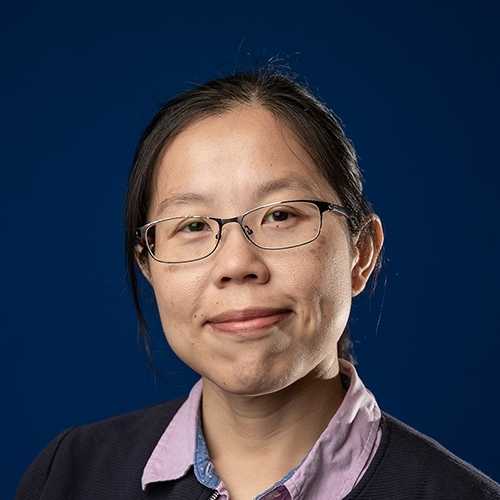LIM CHIN YAN

Dr Lim Chin Yan
Adjunct Principal Investigator
Email: chinyan_lim@asrl.a-star.edu.sg
Research themes: Skin Aging, Skin Barrier, Skin Repair & Wound Healing
Adjunct Principal Investigator
Email: chinyan_lim@asrl.a-star.edu.sg
Research themes: Skin Aging, Skin Barrier, Skin Repair & Wound Healing
Biography
Chin Yan Lim obtained her B.Sc (First Class), with a double major in Biochemistry and Microbiology at the National University of Singapore and her Ph.D. in Molecular Biology at the University of California, San Diego with James T. Kadonaga. She then developed her deep interest in understanding epigenetic mechanisms that impact cell fate decisions during two postdoctoral trainings at the Genome Institute of Singapore and the Institute of Medical Biology, A*STAR. She was appointed to Junior Principal Investigator in IMB in 2014 and promoted to Principal Investigator in 2017. She is presently a Principal Investigator at the Skin Research Institute of Singapore and Adjunct Assistant Professor at NUS, Yong Loo Lin School of Medicine. Her lab studies the impact of chromatin structure alterations in the context of skin development, stem cells, cancer and ageing.
Research interests
We study gene regulatory mechanisms that impact cell fate decisions during embryonic development and extending parallels of these pathways to cancer, ageing and related diseases. Our investigations led to the identification of nuclear factors that control lineage specification and proliferation of embryonic cells at various stages of development e.g. the epiblast/primitive endoderm specification in blastocysts (Lim et al, 2008), mesodermal differentiation during gastrulation (Lim et al, 2013), and teratocarcinoma formation (Lim et al, 2015).Presently, we use epigenomics, genetics, molecular and cell biology and animal models to investigate the roles played by chromatin modifying enzymes in the processes of lineage commitment, proliferation and cellular differentiation of the different cell types of the skin. Highlights of recent studies include elucidation of an unique mechanism in which epidermal cells utilize a pair of paralogous histone acetyltransferases to support divergent functions in self-renewal and differentiation, and the identification of chromatin factors that influence dermal papilla function and hair follicle formation.
Selected publications
Chou AM, Sem KP, Lam WJ, Ahmed S, Lim CY. Redundant functions of I-BAR family members, IRSp53 and IRTKS, are essential for embryonic development. Sci Rep. 2017 Jan 9;7:40485. doi: 10.1038/srep40485. PMID: 28067313; PMCID: PMC5220365.Lim CY, Solter D, Knowles BB, Damjanov I. Development of Teratocarcinomas and Teratomas in Severely Immunodeficient NOD.Cg-Prkdc(scid) Il2rg(tm1Wjl)/Szj (NSG) Mice. Stem Cells Dev. 2015 Jul 1;24(13):1515-20. doi: 10.1089/scd.2015.0033. Epub 2015 May 21. PMID: 25897827.
Lim CY, Reversade B, Knowles BB, Solter D. Optimal histone H3 to linker histone H1 chromatin ratio is vital for mesodermal competence in Xenopus. Development. 2013 Feb;140(4):853-60. doi: 10.1242/dev.086611. Epub 2013 Jan 14. PMID: 23318639.
Avery S, Hirst AJ, Baker D, Lim CY, Alagaratnam S, Skotheim RI, Lothe RA, Pera MF, Colman A, Robson P, Andrews PW, Knowles BB. BCL-XL mediates the strong selective advantage of a 20q11.21 amplification commonly found in human embryonic stem cell cultures. Stem Cell Reports. 2013 Oct 31;1(5):379-86. doi: 10.1016/j.stemcr.2013.10.005. PMID: 24286026; PMCID: PMC3841249.
Lim CY, Tam WL, Zhang J, Ang HS, Jia H, Lipovich L, Ng HH, Wei CL, Sung WK, Robson P, Yang H, Lim B. Sall4 regulates distinct transcription circuitries in different blastocyst-derived stem cell lineages. Cell Stem Cell. 2008 Nov 6;3(5):543-54. doi: 10.1016/j.stem.2008.08.004. Epub 2008 Sep 18. PMID: 18804426.
ORCID
A*STAR celebrates International Women's Day

From groundbreaking discoveries to cutting-edge research, our researchers are empowering the next generation of female science, technology, engineering and mathematics (STEM) leaders.
Get inspired by our #WomeninSTEM
